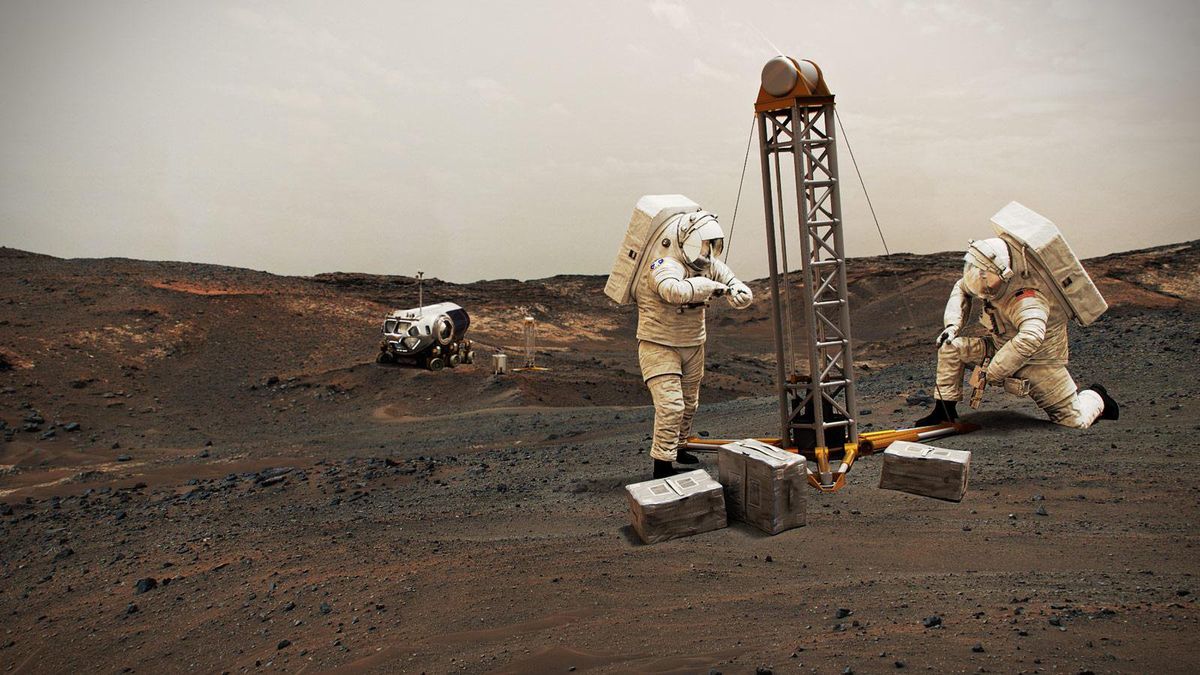By Will Dunham
WASHINGTON (Reuters) -Two decades of observations by a pair of orbiting spacecraft have enabled scientists to track the whirlwinds called "dust devils" that regularly pirouette across the surface of Mars, providing a deeper understanding of the planet's climate and weather, including wind speeds higher than previously known.
Using data from the European Space Agency's Mars Express and ExoMars Trace Gas Orbiter spacecraft, the researchers cataloged 1,039 of these phenomena, detecting wind speeds reaching around 98 miles per hour (158 kph) in these whirlwinds that hoist dust into the Martian atmosphere.
"The key findings of this study are that winds on Mars can be faster across the surface than previously thought, and that these fast winds are more widespread than previously thought," said planetary scientist Valentin Bickel of the University of Bern in Switzerland, lead author of the study published on Wednesday in the journal Science Advances.
The dust devils were found to develop more often in the flat plains of the northern lowlands but also occurred in the rough terrain of the southern highlands. Some locales were especially prone, including Amazonis Planitia, which is one of the smoothest expanses of plains on Mars and is situated between the planet's two main volcanic regions.
The largest observed dust devil was approximately 1,900 feet (580 meters) wide, though the average was about 270 feet (82 meters) across. The average wind speed was about 40 miles per hour (64 kph), though the researchers noted that the method they employed was likely to miss many slower dust devils.
Bickel said the study measured the fastest surface-level winds on record for Mars. While these speeds make it sound like these winds would feel powerful, that is not really the case because of how thin the Martian atmosphere is compared to Earth.
"You would barely feel Martian winds," Bickel said.
Dust devils form when warmer air near the surface starts to rise and is spun up by horizontal winds, eventually picking up dust from the ground before usually dissipating after a few minutes. They were observed most often during the Martian summer in the late morning to early afternoon when conditions were especially conducive.
Dust devils also occur on Earth in dry and dusty places like the deserts of the U.S. states of Arizona and Nevada, but are far less common because our planet is so much wetter than Mars.
"Since the Martian atmosphere is so thin and the surface dry and dusty, it can heat up rapidly under the sun, making it more prone to dust devils," said study co-author Antonia Schriever, a planetary scientist at the German Aerospace Center.
Scientists have known for decades about the existence of dust devils on Mars. But the new research using data from Mars Express starting in 2004 and from ExoMars TGO starting in 2016 represents the most systematic examination of them to date.
The study showed that strong near-surface winds are abundant on Mars and play an important role in injecting dust into the atmosphere, findings that may inform more accurate models of the planet's weather, climate and atmospheric conditions.
The amount of dust lifted into the Martian atmosphere is crucial for dust storm initiation, cloud formation and even water vapor release into space, Schriever said.
"By studying dust devils that make wind - which is usually invisible for us - visible in images of Mars we can better understand the processes that occur on the Martian surface," Schriever said.
Dust persists in the Martian atmosphere for a long time, being blown by winds around the planet. On Earth, rain and humidity regularly remove dust from the atmosphere. The dust suspended in the Martian atmosphere can keep daytime temperatures cooler by filtering out sunlight while keeping nighttime temperatures higher by trapping warmth near the surface.
The research could help in planning future missions exploring the Martian surface.
"For example, our data could be used to better understand the atmospheric dynamics for specific landing sites, prior to the landing and even the launch of the spacecraft. Our data can provide a first estimate of the abundance of dust devils as well as the distribution of wind speeds and directions in a specific region," Bickel said.
The findings also could be used to forecast whether rovers and landers might experience beneficial winds that blow away dust that accumulates on the solar panels that power them, Bickel added.
(Reporting by Will Dunham, Editing by Rosalba O'Brien)
.png)
 German (DE)
German (DE)  English (US)
English (US)  Spanish (ES)
Spanish (ES)  French (FR)
French (FR)  Hindi (IN)
Hindi (IN)  Italian (IT)
Italian (IT)  Russian (RU)
Russian (RU) 








Comments